1. Tipping Isn’t Optional—It’s Part of the Wage System

In the U.S., tipping isn’t just a nice thing to do—it’s a fundamental part of the wage system for many service workers. Federal law allows employers to pay a tipped minimum wage as low as $2.13 per hour in some states, according to the US Department of Labor, which is far below the standard federal minimum wage. The assumption is that tips will make up the difference, but this system places a heavy burden on both workers and customers. Without tips, many workers wouldn’t even earn a livable wage. If tips don’t bring their total earnings up to the standard minimum wage, employers are supposed to cover the shortfall—but in practice, this doesn’t always happen.
This system is unique to the U.S. and can feel confusing, especially for visitors from countries where tipping isn’t customary. It’s important to understand that tipping here is less of a reward for great service and more of a requirement to ensure workers are paid fairly. Until the wage system changes—something many advocates are fighting for—tipping remains essential. By tipping appropriately, you’re not just being kind; you’re helping someone make ends meet.
2. 15-20% Is the Standard, Not a Generous Gesture

Many people think of tipping as an optional bonus for exceptional service, but in the U.S., leaving 15-20% of the pre-tax bill is the norm for sit-down restaurants, according to American Express. This range isn’t for extraordinary service; it’s simply the baseline for standard or acceptable service. If the service is excellent, tipping 25% or more is a nice way to show your appreciation. Falling below 15% can be seen as a statement that the service was poor, even if that’s not your intention.
This practice can seem excessive to those from countries where tipping isn’t common or is capped at 10%. However, in the U.S., tipping is a cultural expectation tied to how the industry is structured. Many servers rely entirely on tips to cover their basic living expenses. By factoring in a 15-20% tip as part of the cost of dining out, you’re supporting the people who work hard to make your meal enjoyable. If you’re on a tight budget, consider dining at fast-casual spots where tipping isn’t required, or cooking at home.
3. Tipping on Takeout Orders Is Now a Common Courtesy

Before the COVID-19 pandemic, tipping for takeout was rare. People typically reserved tips for sit-down dining experiences or delivery orders. However, the pandemic changed the game, USA Today shares. With restaurants struggling to survive and staff handling an increased volume of takeout orders, tipping for takeout became a way to support the industry. Today, leaving 10-15% on takeout is considered a kind and courteous gesture.
Preparing takeout orders isn’t as simple as it seems. Staff have to organize multiple orders, pack everything carefully, and ensure the food is hot, accurate, and ready on time. While tipping on takeout isn’t mandatory, it’s a meaningful way to show gratitude for their hard work. If you’re ordering from a small, local restaurant or during peak hours, your tip can make a big difference to the staff.
4. Delivery Drivers Deserve More Than a Few Dollars
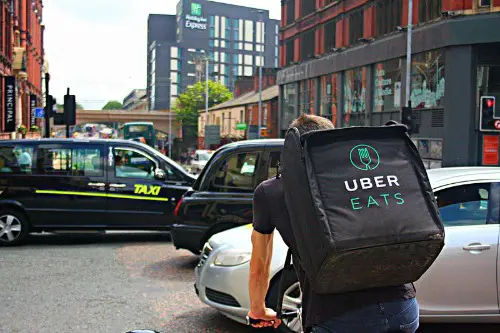
When tipping delivery drivers, many people default to leaving just a couple of dollars, but that’s often not enough. Delivery workers typically cover their own expenses, such as gas, car maintenance, and sometimes even tolls. They also face challenges like traffic, bad weather, and long waits at restaurants. A good rule of thumb is to tip at least 20% of your order total, or a flat $5—whichever is higher, Business Insider explains.
It’s also important to note that delivery fees charged by apps like DoorDash or Uber Eats don’t usually go to the driver. Those fees cover other operational costs, leaving tips as the primary source of income for drivers. By tipping generously, you’re not just rewarding the convenience of having food brought to your door; you’re ensuring that the person doing the work is fairly compensated for their time and effort.
5. Bartenders Expect $1-2 Per Drink
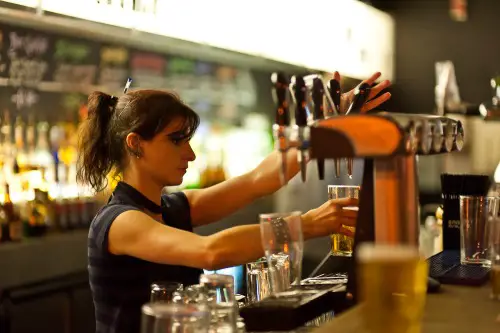
Ordering drinks at a bar comes with its own tipping etiquette. The standard tip is $1-2 per drink, whether it’s a simple beer or a more complex cocktail, Food & Wine recommends. If you’re running a tab, tipping 15-20% of the total bill is appropriate, especially if the bartender has been attentive or gone out of their way to make your experience enjoyable.
Bartenders often work long, hectic shifts, juggling multiple customers at once. Tipping appropriately not only shows appreciation for their effort but can also improve your experience. Regular customers who tip well often receive quicker service, and bartenders may even remember your favorite drink. It’s a small investment in a more enjoyable night out while supporting a hardworking service professional.
6. Hotel Housekeeping Staff Should Be Tipped Daily

Housekeeping is one of the most physically demanding jobs in the hospitality industry, yet it’s often overlooked when it comes to tipping. The standard recommendation is to leave $2-5 per night, depending on the level of service and the quality of the hotel. Importantly, you should tip daily rather than at the end of your stay, as different housekeepers may clean your room on different days.
Leaving a tip is a way to acknowledge the hard work that goes into maintaining a clean and comfortable environment for guests. Housekeepers clean bathrooms, change bed linens, vacuum floors, and restock toiletries—all tasks that are time-consuming and physically exhausting. To leave a tip, you can place cash in an envelope labeled “Housekeeping” or leave it with a note on the bedside table.
7. Baristas and Counter Staff Appreciate Small Tips

Tipping baristas and counter staff isn’t as widely expected as tipping servers at sit-down restaurants, but it’s still a thoughtful gesture. Leaving your spare change, a dollar, or even 10-15% of your total order shows appreciation for the effort that goes into preparing your coffee or snack. Many cafes now have digital tip options, making it easy to tip even when paying by card.
These tips often go into a shared pool, benefiting everyone from the cashier to the barista making your drink. Small tips might not seem like much, but they add up and can help supplement the relatively low hourly wages many of these workers earn. Even if tipping isn’t required, it’s a simple way to brighten someone’s day and show gratitude for their service.
8. Always Tip Spa and Salon Professionals

If you’re getting a haircut, manicure, massage, or any other personal service, tipping is part of the deal. The standard tip for spa and salon professionals is 15-20% of the total cost. If you’ve received exceptional service or if the appointment required extra time or effort, tipping more generously is a nice way to say thank you.
These professionals rely heavily on tips to boost their income, especially in salons where they might rent their chair and pay fees to the business. Building a relationship with your stylist, technician, or therapist through consistent tipping can lead to better service over time. It’s also a way to acknowledge the skill and care they bring to their work.
9. Taxi and Rideshare Drivers Need at Least 15%
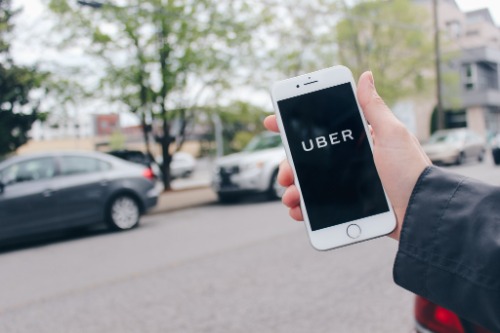
When tipping taxi or rideshare drivers, 15-20% of the total fare is the standard in the U.S., just like in restaurants. For short rides, you might round up to a flat $3-5, but for longer trips, especially those with heavy traffic or multiple stops, tipping a percentage is more appropriate. Drivers often deal with unexpected costs like gas price fluctuations, vehicle maintenance, and the commission taken by rideshare apps.
Beyond covering their expenses, tipping shows appreciation for the driver’s effort to get you to your destination safely and efficiently. If the driver helps you with luggage, navigates tricky routes, or maintains a clean and comfortable vehicle, tipping on the higher end of the range is a great way to acknowledge their work. Most rideshare apps have built-in tipping options, so even if you don’t carry cash, you can tip easily through the app.
10. Don’t Forget Movers and Furniture Delivery Crews
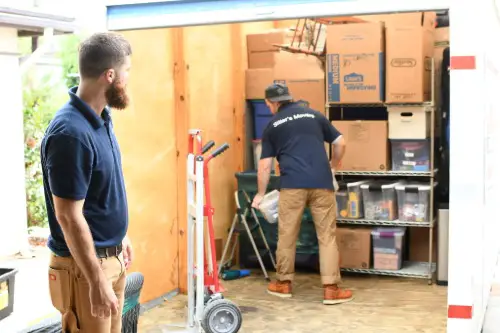
Moving is one of the most physically demanding jobs in the service industry. If you’ve hired movers to help with your relocation or delivery workers to bring large furniture or appliances to your home, tipping is a significant part of their income. For smaller moves or short deliveries, $10-20 per person might suffice. For longer moves or exceptionally difficult jobs, tipping $40-50 per mover—or more—is the standard.
These workers often carry heavy, awkward items up and down stairs, carefully load and unload trucks, and navigate tight spaces to ensure your belongings arrive safely. The effort they put in can’t be overstated. If the team goes above and beyond, such as handling fragile items with extra care or staying late to complete the job, consider tipping even more generously. It’s a small price to pay for the peace of mind they provide.
11. Valet Attendants Should Get $2-5
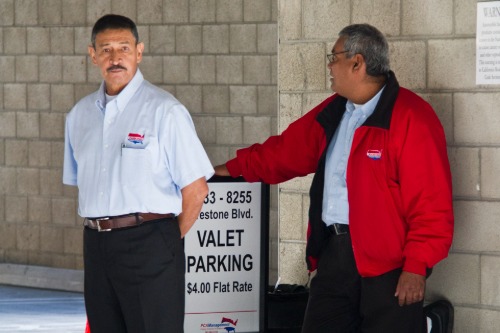
Valet parking is a convenient service, but it’s important to remember to tip the attendants who handle your car. The standard tip is $2-5 when your car is returned to you, though tipping more for quick or attentive service is always appreciated. If you’re using valet at a hotel, it’s customary to tip every time the valet retrieves your car, not just at the end of your stay.
Valet attendants often work in challenging conditions, like extreme heat, cold, or rain, and they’re responsible for parking and retrieving vehicles efficiently and safely. Tipping not only rewards their effort but also ensures a smoother experience if you need to use the service again during your visit. Keeping small bills handy can make tipping easy and stress-free.
12. Tip Tour Guides and Activity Instructors

Tour guides and activity instructors work hard to create memorable experiences, whether it’s a walking tour of a historic city, a guided hike, or a hands-on activity like snorkeling or zip-lining. If you’re on a group tour, tipping $5-10 per person is the standard. For private or all-day tours, tipping 10-20% of the tour cost is appropriate.
Guides and instructors often go above and beyond by sharing interesting facts, tailoring the experience to your group, and ensuring your safety. They may also deal with logistical challenges, like managing schedules or handling large groups. A generous tip not only rewards their effort but also helps support their livelihood, as many guides rely on tips as a significant portion of their income.
13. Gratuity May Be Included for Large Groups

When dining out with a large group, many restaurants automatically include gratuity in the bill, typically around 18-20%. This policy ensures servers don’t miss out on tips due to uneven contributions from group members or misunderstandings about tipping norms. However, it’s important to check your bill carefully. If gratuity is included, additional tipping is optional but can be a kind gesture if the service was exceptional.
For groups, serving becomes more complicated. Servers often need to coordinate multiple orders, handle split checks, and accommodate varying requests—all while ensuring everyone’s meal is prepared and served correctly. Automatic gratuity takes some of the stress off the server and allows them to focus on providing good service. If gratuity isn’t included, make sure to tip as a group to avoid leaving an insufficient amount.
14. Always Tip Casino Dealers and Staff

When gambling in a casino, tipping isn’t just polite—it’s part of the culture. Casino dealers often rely on tips to boost their earnings, as their base pay is usually modest. If you’re winning, it’s customary to tip 1-5% of your total winnings or to toss the dealer a chip or two during play. Even if you’re not winning big, tipping a few dollars periodically is appreciated.
Other casino staff, like cocktail servers, also depend on tips. When they bring you a drink, a $1-2 tip per drink is standard. Tipping at casinos creates a more enjoyable environment for everyone involved. It can also build goodwill with the staff, which might result in better service or even small perks, like quicker drink refills or helpful advice on gameplay.
15. Don’t Skip Tipping in Bars or Restaurants Abroad

Tipping customs vary widely around the world, but if you’re in an American-style bar or restaurant abroad, tipping like you would in the U.S.—15-20%—is usually expected. Workers in these establishments are often familiar with American tipping norms, and gratuity is typically part of their income structure.
That said, it’s essential to research local tipping practices before traveling. In some countries, tipping isn’t customary, and leaving a tip might even be seen as strange. However, in tourist-heavy areas or places catering to American visitors, tipping remains the norm. By following local guidelines and tipping appropriately, you’ll avoid awkward situations while ensuring that service workers feel appreciated.


